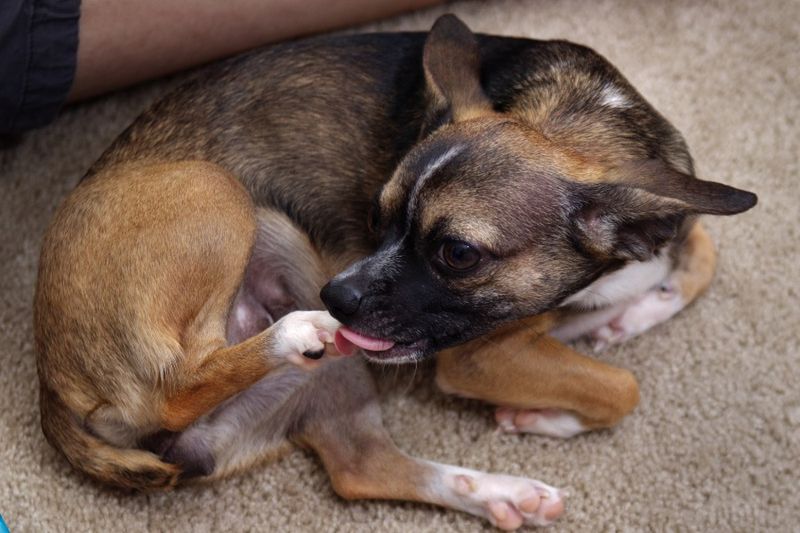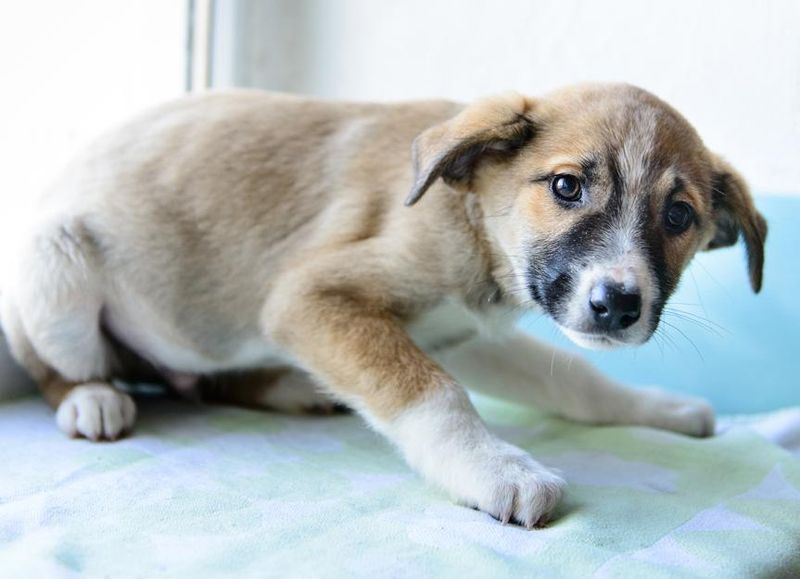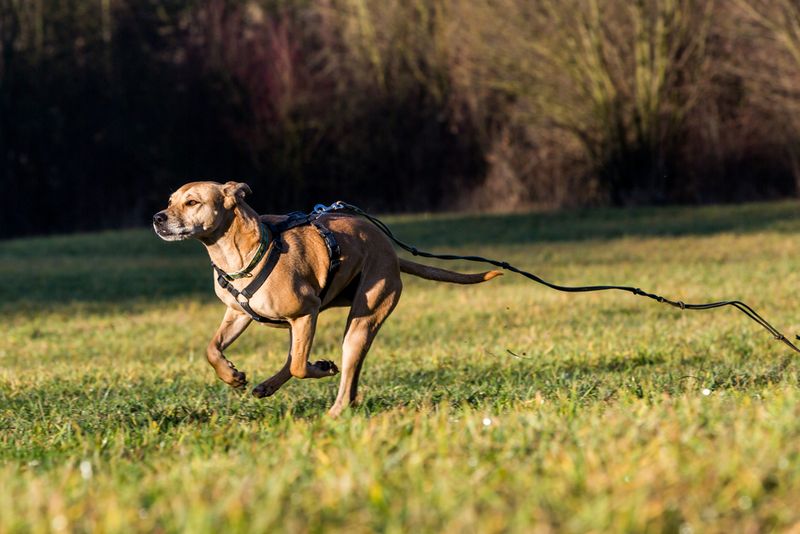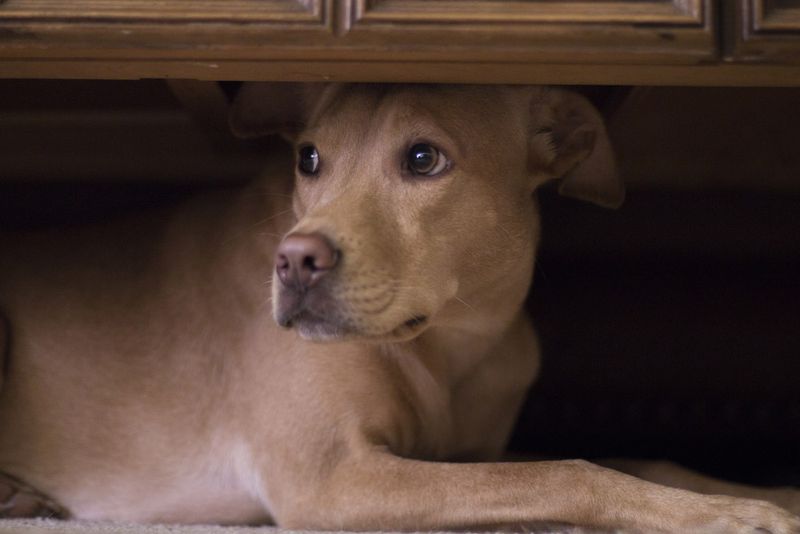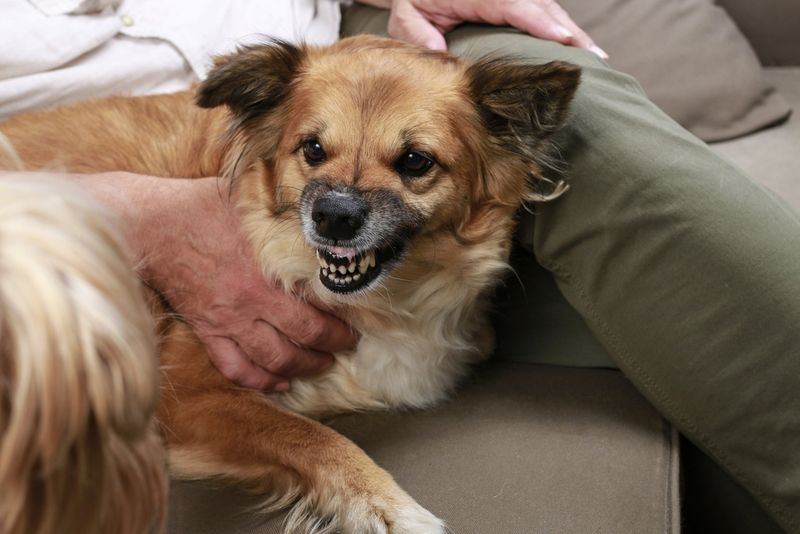Spotting anxiety in dogs can be challenging for many pet owners. However, understanding the signs and knowing how to address them can greatly improve your furry friend’s quality of life. This guide explores thirteen distinct indicators of anxiety in dogs, each with practical advice on how to help.
Excessive Barking
Ever wonder why your dog won’t stop barking at seemingly nothing? Excessive barking can be a sign of anxiety in dogs. This behavior often manifests when your pet feels threatened or uncertain about their surroundings. It’s crucial to identify the triggers that set off this vocal response.
Consider consulting with a veterinarian or dog behaviorist to better understand the cause. Implementing a consistent routine and providing mental stimulation through toys or training can help alleviate anxiety. Patience and understanding are key to calming your anxious barker and restoring peace to your home.
Destructive Chewing
Chewing on your belongings is not just about teething or mischief. Dogs often resort to destructive chewing to cope with anxiety, especially when left alone for long periods. This behavior can be frustrating for owners, but it’s important to view it as a call for help.
Providing plenty of chew toys and ensuring your dog receives enough exercise can mitigate this issue. Gradually increasing the time you spend apart can also help your dog adjust better to being alone. Understanding the underlying fear behind this behavior is essential in addressing it effectively.
Pacing or Restlessness
Pacing and restlessness are common signs that your dog is feeling anxious. This behavior is often observed during thunderstorms, fireworks, or any sudden changes in environment. It reflects the dog’s inability to find comfort or settle down.
To help your furry friend, try creating a safe space where they can retreat during stressful situations. Calming music or white noise can also provide comfort. Consistency in routine and environment often helps reduce anxiety over time, allowing your dog to feel more secure and relaxed.
Excessive Licking or Grooming
When your dog licks its paws incessantly or grooms itself more than usual, it might be experiencing anxiety. This compulsive behavior often serves as a self-soothing mechanism, much like nail-biting in humans.
Consider redirecting this behavior with play or a short walk when the licking begins. Consulting with your vet may be necessary to rule out any underlying medical issues. Providing a consistent routine and plenty of physical activity can also help alleviate your dog’s stress.
Trembling or Shaking
Some dogs may shake or tremble when they’re anxious. This is especially common in smaller breeds like Chihuahuas, who may feel more vulnerable. The trembling is a physical manifestation of their fear, often triggered by loud noises or unfamiliar environments.
Comforting your dog with gentle words and physical touch can help ease their anxiety. Creating a safe, cozy space where they can retreat during stressful times is also beneficial. Understanding your dog’s specific triggers will allow you to manage their anxiety more effectively.
Loss of Appetite
When your dog suddenly loses interest in food, it may be a sign of anxiety. Stress can affect your pet’s digestive system and lead to a decreased appetite. Identifying the cause is crucial, whether it’s a new environment or changes in routine.
Try to maintain a consistent feeding schedule and introduce appetite-stimulating foods. Consult with your veterinarian to rule out any underlying medical issues. Providing a calm and stable environment often helps improve your dog’s eating habits and reduces anxiety.
Escaping or Running Away
If your dog repeatedly tries to escape or run away, it’s likely an indication of anxiety. This behavior can be dangerous, leading to lost pets and potential accidents. It’s often triggered by fear or separation anxiety.
Ensure your home and yard are secure to prevent escapes. Gradual desensitization and positive reinforcement can help reduce your dog’s urge to flee. Working with a professional trainer may also be necessary to address this issue effectively, keeping your furry friend safe.
Digging
Dogs dig for a variety of reasons, but it can also be a sign of anxiety. This behavior may occur when they’re left alone or feeling stressed. Digging provides an outlet for their energy and can be a way to self-soothe.
To address this, ensure your dog gets plenty of physical activity and mental stimulation. Designating a specific area where digging is allowed, like a sandbox, can help satisfy this instinct in a controlled manner. Understanding your dog’s needs is the key to curbing unwanted digging.
Whining or Whimpering
Whining or whimpering is a vocal clue that your dog may be anxious. This behavior often occurs when they’re separated from their owner or in unfamiliar surroundings. It’s their way of expressing discomfort or pleading for attention.
Offering comfort and reassurance can help, but it’s also important to teach your dog to be independent. Training them to be alone gradually can alleviate separation anxiety. Providing toys or interactive games can also keep them occupied and distracted from their worries.
Panting or Increased Heart Rate
Panting or an increased heart rate in normal temperatures often indicates anxiety in dogs. These physical responses are linked to stress and can occur during car rides, vet visits, or any anxiety-inducing events.
Offering a calm and reassuring presence can help reduce your dog’s stress. Gradual exposure to triggering situations with positive reinforcement can also alleviate anxiety. Monitoring your dog’s physical responses allows you to anticipate and manage anxiety before it escalates.
Hiding or Seeking Solitude
When your dog suddenly hides or seeks solitude, it may be dealing with anxiety. This behavior is often observed during loud events or when new people visit your home. It’s their way of avoiding perceived threats and finding comfort in solitude.
Respecting their need for space while gently encouraging social interaction can help. Creating a cozy, safe haven where your dog can retreat to is also beneficial. Understanding and respecting your pet’s boundaries will foster a sense of security and trust.
Aggression
Aggression can be a symptom of anxiety in dogs, manifesting as growling, lunging, or snapping. Fear-based aggression often arises from a lack of socialization or exposure to threatening situations.
Addressing this requires patience and understanding. Working with a professional trainer or behaviorist can provide strategies to manage and reduce aggressive responses. Socialization and positive reinforcement are key components in helping your dog feel more at ease and less threatened by its environment.
Changes in Sleep Patterns
Anxiety can disrupt your dog’s sleep, leading to restless nights or excessive sleeping. This change in sleep patterns might occur due to stress, environmental changes, or health issues.
Observing your dog’s sleep behavior and environment can help identify stressors. Ensuring a comfortable and quiet sleeping area is crucial. Consulting with a vet to rule out medical causes is also advisable. A calm and predictable routine can aid in normalizing your dog’s sleep patterns and reducing anxiety.




